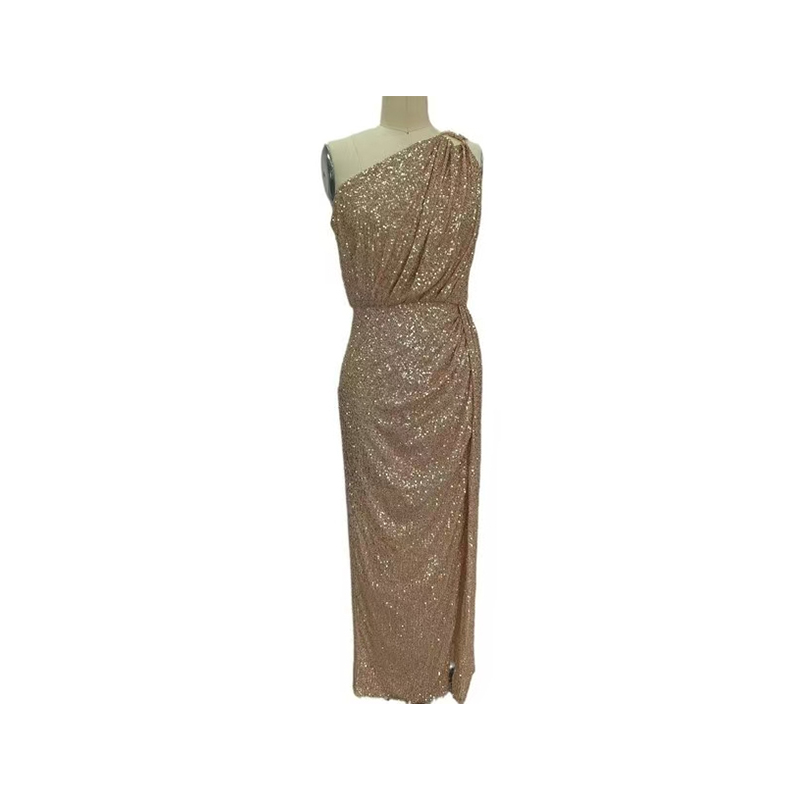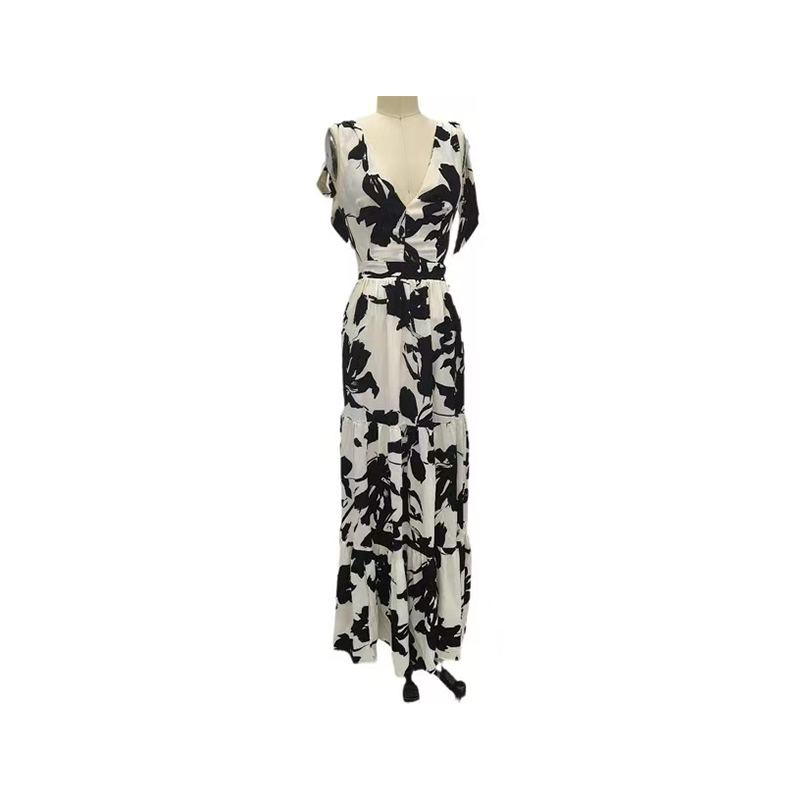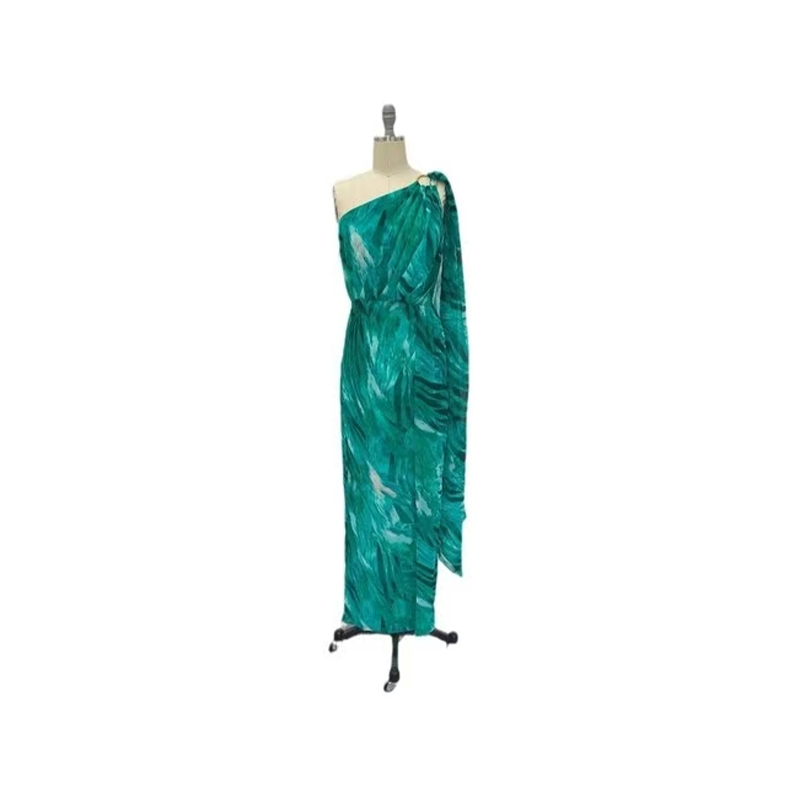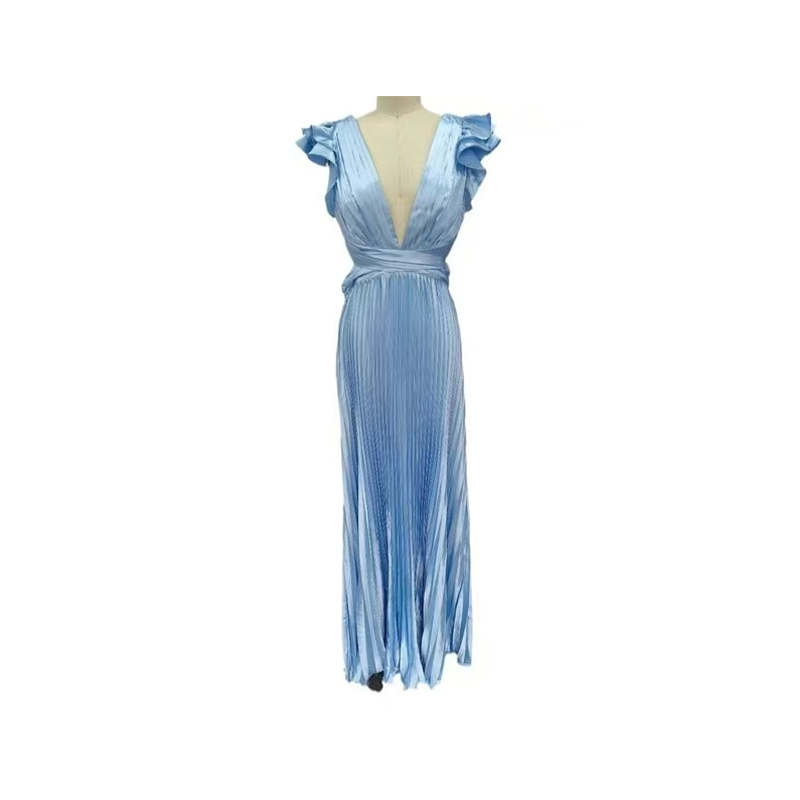What kind of elastic material should be added to the waistband of a high-waisted dress (long skirt) to avoid marks from sitting for a long time?
Release Time : 2025-09-09
When choosing elastic trim for the waistband of a high-waisted dress (long skirt), the key considerations are elastic adaptability, pressure distribution, and skin-fitting properties. The key is to ensure waistband support to maintain the defined shape while also utilizing the material's properties to mitigate localized pressure during prolonged sitting, preventing marks. Among common and suitable trim types, spandex edging is a basic and practical choice. This type of trim is made of spandex as the core material, with a lightweight outer layer of cotton or polyester. It provides uniform elastic recovery and enhances skin-to-skin comfort through the outer fabric. Spandex edging is commonly used for waistband edges or as an integral layer. Its advantage lies in its moderate elasticity, preventing excessive stretching and resulting in bagginess, while also preventing tightness due to insufficient elasticity. For extended periods of sitting, when the abdomen bulges slightly, the edging can gently expand with the body's contours, distributing pressure from the waistband to the waist, preventing concentrated pressure and causing marks. Furthermore, the soft outer fabric reduces friction between the trim and the skin, further minimizing discomfort.
Elastic knit bands are more suitable for high-waist designs that require both comfort and support, especially those made from double-faced terry or thin plain weave. These materials are knitted with micro-perforations, which can alleviate the problem of stuffiness around the waist caused by sweating during prolonged sitting. The elasticity of the knit structure creates a more "wrapped" rather than "restrictive" feel—it conforms to the waistline and distributes pressure evenly, rather than creating a noticeable squeeze line like rigid bands. Furthermore, the width of the elastic knit band can be adjusted to suit the waistband design. Wider styles (e.g., 3-5 cm) distribute the pressure of the waistband over a larger contact area, further reducing the possibility of pinch marks. The softness of the knit fabric ensures that even after prolonged contact with the skin, static pressure from prolonged sitting will not leave noticeable marks.
For even greater comfort, memory foam stretch tape is a more advanced option. This type of tape uses a thin memory foam base with a layer of elastic fabric on the surface, providing both elasticity and cushioning. Memory foam's unique ability to gently shape itself according to body pressure and temperature. When sitting for extended periods, the abdominal area exerts pressure on the waistband, and the memory foam adjusts its shape accordingly, forming a support surface that conforms to the abdominal contours, preventing stiff fabrics from directly pressing against the skin. Furthermore, the cushioning effect of memory foam reduces direct pressure from the waistband, allowing pressure to be transferred slowly through the memory foam layer, reducing localized pressure and thus preventing marks. This type of fabric is particularly suitable for dresses (long skirts) with a certain thickness at the waistband (such as woolen fabrics or thick chiffon). It not only integrates with the waistband structure to enhance texture, but also provides enhanced comfort through its cushioning properties, making it particularly suitable for commuting or leisure activities involving long periods of sitting.
In addition to single fabrics, some high-waisted dresses (long skirts) also utilize a composite design with a "stretch yarn interlayer." This design involves inserting longitudinally arranged stretch yarns (such as spandex or elastane) into the waistband fabric interlayer. This elasticity of the yarn imparts overall elasticity to the waistband, rather than relying on external fabrics. The advantage of this design is that the waistband is thin and lightweight, without the added bulk of additional fabric. Furthermore, the stretch yarn is evenly distributed within the waistband, creating an "invisible elasticity" effect. While the waistband maintains a clean, streamlined silhouette, the yarn expands and contracts internally to accommodate body movements. During prolonged sitting, the stretch yarn slightly stretches with the abdominal area, preventing waistband tightness. Furthermore, the yarn's high elastic recovery prevents waistband deformation from prolonged sitting, ensuring both stability and comfort.
Furthermore, the method used to secure the stretch fabric can affect its effectiveness in preventing marks. Regardless of the material chosen, avoid sewing it directly to the inside of the waistband with rigid thread. Stiff stitching can create additional pressure points at the waist, increasing the risk of marks. Typically, blind-stitching or flat-seam seams are used to seamlessly attach the trim to the waistband fabric, ensuring smooth edges without protrusions. Fine anti-slip strips (such as silicone dots or thin anti-slip fabric) are added to the inside of the waistband to prevent the waistband from sliding down and pulling during prolonged sitting. This further reduces friction and pressure caused by adjusting the waistband position, further enhancing the trim's effectiveness in preventing marks.
The choice of elastic trim for the waistband of a high-waisted dress (long skirt) should be carefully considered based on the fabric material, waistband design style, and intended use. The key is to balance support with long-term wear through the trim's elastic properties, pressure distribution, and contact comfort. This avoids marks caused by insufficient elasticity, concentrated pressure, or overly rigid materials, ensuring that the high-waisted design is both aesthetically pleasing and comfortable for long-term wear.







